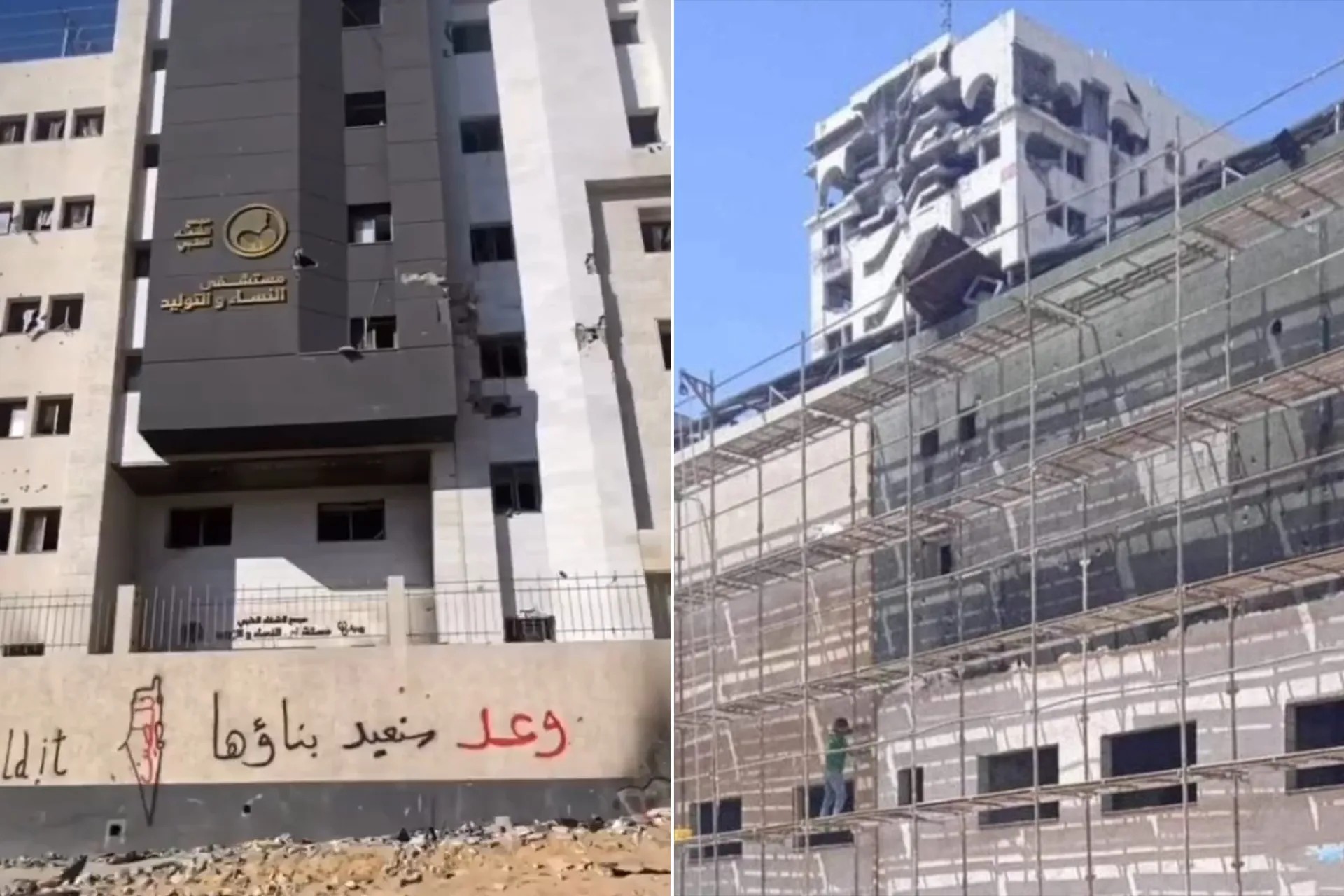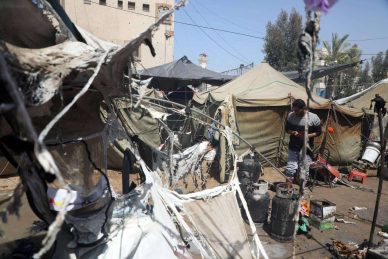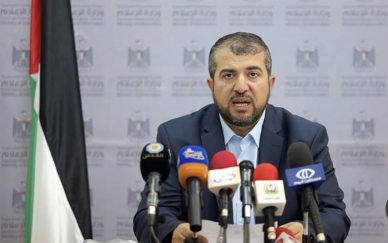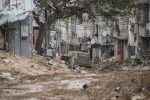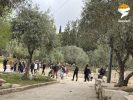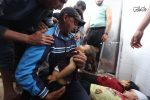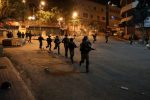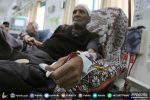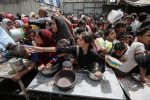GAZA, (PIC)
The suffering of Palestinians in the Gaza Strip continues to take various forms, particularly regarding the loss of security, food, and the destruction of the health sector and service institutions. This follows a bloody war that lasted over 15 months, leaving behind complete devastation across every inch of the territory, in addition to the martyrdom and injury of about 170,000 people, while the blockade remains ongoing.
Among the most significant daily hardships faced by the people of Gaza is the near-total destruction of health institutions due to the Israeli war machine. There are no medical services available for patients of all ages and varying health conditions. Additionally, the wounded who were injured during the war face life-threatening risks or, at the very least, the loss of vital functions in their bodies, especially given the closure of crossings by Israeli occupation authorities, which prevents even the possibility of transferring them outside Gaza for treatment.
Life amidst the ruins
Since the ceasefire agreement took effect, residents of Gaza have been attempting to restore what was destroyed by the Israeli occupation army during its brutal aggression throughout the war. This effort includes relief initiatives involving many personalities, government sectors, and service providers, as well as external efforts working diligently to support the people of Gaza in the aftermath of the war.
Journalist Anas Al-Sharif reports on the devastation inflicted on Al-Nasr Hospital in Gaza City, located in the northern part of the Strip, which has been completely rendered non-operational. The hospital was specifically dedicated to child care, which has adversely affected the health conditions of children who are suffering from diseases, hunger, and malnutrition, in addition to those who were injured during the Israeli aggression.
One of the doctors at Al-Nasr Hospital noted that the Israeli occupation deliberately targeted children’s hospitals, specifically attacking Al-Nasr Hospital, Al-Rantisi Hospital, Kamal Adwan Hospital, and Al-Dura Hospital. He pointed out that Al-Nasr Hospital was the main hospital in the Gaza Strip, serving more than 150,000 children annually, with over 150 beds, a large intensive care unit, and a nursery for infants.
In the context of the campaign launched by the people of Gaza to rebuild the destroyed health sector, the doctor mentioned that there is a campaign led by the Kuwaiti Relief Society in collaboration with the Palestinian Ministry of Health and several initiators to rebuild Al-Nasr Hospital to serve children and establish all necessary specialties, highlighting the announcement of a fundraising campaign for this purpose.
Activist Saleh Al-Jaafari noted that the campaign aimed at rebuilding Al-Nasr Hospital for children is sponsored by the Kuwaiti Ministry of Social Affairs in cooperation with the Palestinian Ministry of Health. He indicated that the campaign succeeded in raising $3 million in one day, thanks to God and the efforts of charitable individuals, as part of the budget allocated by the Palestinian Ministry of Health for the hospital’s reconstruction, which is estimated at $10 million.
Relief efforts
The health sector is trying to recover by implementing several small projects funded by Arab and Islamic institutions and associations abroad. The Assistant Undersecretary at the Palestinian Ministry of Health in Gaza, Dr. Maher Shamiya, said that efforts to restore the health system in the enclave are underway, with health workers working tirelessly to provide appropriate services to every Palestinian citizen.
Shamiya listed some of the projects that have been accomplished recently, including the reopening of the emergency department at Al-Shifa Medical Complex in September, after it was destroyed and burned by the occupation during the military operation against the complex on March 18, 2024, which lasted for two weeks and rendered it completely out of service. He mentioned the establishment of two surgical operation rooms and a large hall that accommodates 40 beds. The kidney dialysis department has also been reopened with a capacity of 30 machines, he said, pointing to the potential to host a large field hospital in the western area of Al-Shifa Medical Complex if the calm persists following the ceasefire agreement.
He pointed out that Al-Shifa Medical Complex still requires substantial and specific materials to rehabilitate other departments, such as the specialties and surgeries building, in addition to the need for medical devices and equipment. He noted that the ministry has successfully reopened the Al-Rantisi Children’s Hospital in Gaza City in its first phase, with another project underway to complete the rehabilitation of the entire hospital building. The only specialized eye hospital has also reopened, reaching a capacity of 90%.
On December 31, 2024, the Palestinian Ministry of Health, in cooperation with the Algerian Baraka Association, opened the only specialized eye hospital in Gaza City, which was renovated after the Israeli occupation army destroyed large parts of it during the aggression on the Strip.
He confirmed that there is a project to reopen the Martyr Muhammad Al-Durra Children’s Hospital in eastern Gaza City, which is ready and awaiting the return of specialized medical staff from the south to the north of the Strip. The ministry has decided to operate the Indonesian Hospital in the north in the coming days.
There has been a rapid pace of work to repair some of what was destroyed by the occupation, and the Ministry of Health has managed to operate the Patient Friends Hospital in Gaza City, in addition to receiving promises from various parties to implement large projects in the health system.
Shamiya pointed out that the occupation has completely destroyed the entire primary care system in the northern governorate, leading the ministry to rely on field centers funded by international organizations instead.
Many health centers and private clinics have reopened their doors and received patients according to the available resources, in an effort to regain their footing and not succumb to the reality imposed by the Israeli occupation.
A complex task
Dr. Tedros Adhanom Ghebreyesus, Director-General of the World Health Organization (WHO), warned that rebuilding the health system in Gaza will be a “complex and difficult task” after the destructive Israeli aggression that began over 15 months ago.
In a statement following the signing of the ceasefire agreement on January 19, he said, “Meeting the enormous health needs and rebuilding the health system in Gaza will be a complex and difficult task due to the extent of the destruction and the operational complexities and existing restrictions.”
WHO recently estimated that more than $10 billion is needed to rebuild the health system in the Palestinian health sector, which has faced relentless Israeli aggression since October 7, 2023, noting that only half of Gaza’s 36 hospitals are still partially operational, and only 38% of primary health care centers are functioning.
The organization said that it will implement a 60-day plan with its partners focusing on trauma treatment, emergency care, primary health services, child health, non-communicable diseases, and other health aspects, as expected from the implementation of the terms of the agreement between the Israeli occupation and Hamas.
Dr. Ghebreyesus and Dr. Hanan Balkhy, WHO Regional Director for the Eastern Mediterranean, revealed that they have laid out a roadmap for rebuilding the devastated health system in Gaza.
The officials emphasized that urgent efforts should focus on several priorities, including rebuilding hospitals and infrastructure to improve health outcomes, expanding mental health services to address psychological trauma, managing other chronic diseases, enhancing preventive efforts, and ensuring care for other health cases, as well as pushing for international support to lift the blockade and finance recovery in health care to ensure long-term stability.
They added that short-term targeted efforts should be directed toward expanding mobile clinic services and teleconsultations and evacuating patients with critical illnesses until the health system recovers, stressing the need to secure a permanent ceasefire to enable sustainable rebuilding and complete restoration of health care.
The need for financial support
In this context, Ismail Al-Thawabta, Director General of the Government Media Office in Gaza, said that the occupation continues to procrastinate in fulfilling its commitments outlined in the ceasefire agreement by preventing the entry of necessary materials for restoring hospitals and medical centers.
Al-Thawabta affirmed in a previous television interview that the health system in Gaza is deteriorating after being systematically destroyed by the occupation during its fierce war on the Strip, which did not distinguish between people, stones, or trees.
He added that there are ongoing operations to prepare hospitals and health centers in anticipation of financial support and the implementation of necessary projects, noting that the top priority is to revive the health reality and restore hospitals to operational status.
He called on the international community to intervene and pressure Israel to implement the humanitarian protocol that stipulates the opening of crossings and the entry of medical equipment and aid materials to uplift the humanitarian needs in Gaza, especially the health sector.
According to previous statements from health sector officials, all hospitals in the enclave are suffering from a severe shortage of medicines and medical supplies, with a drug shortage reaching 85%, especially those needed for patients with chronic diseases, while the shortage in medical supplies is 75%.

